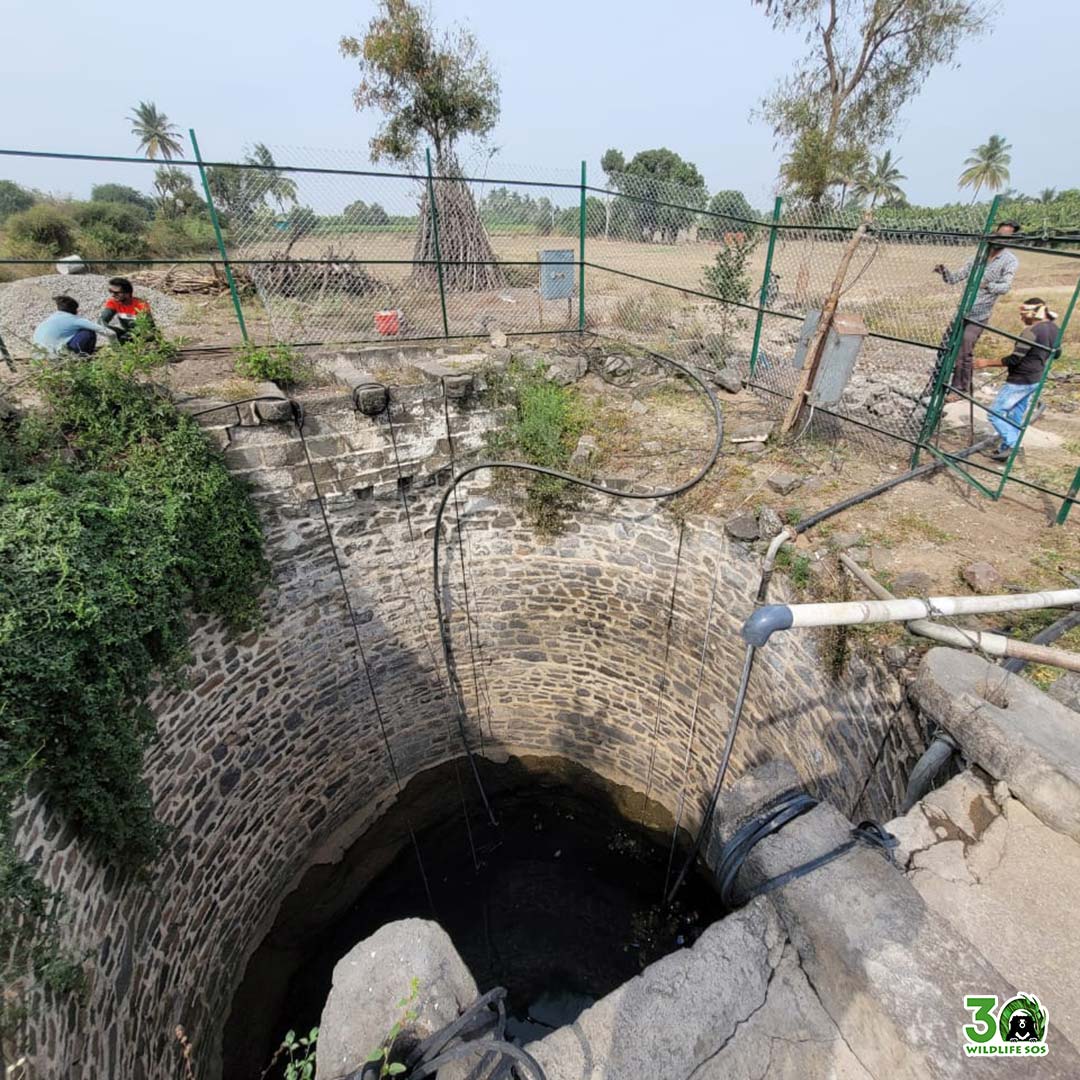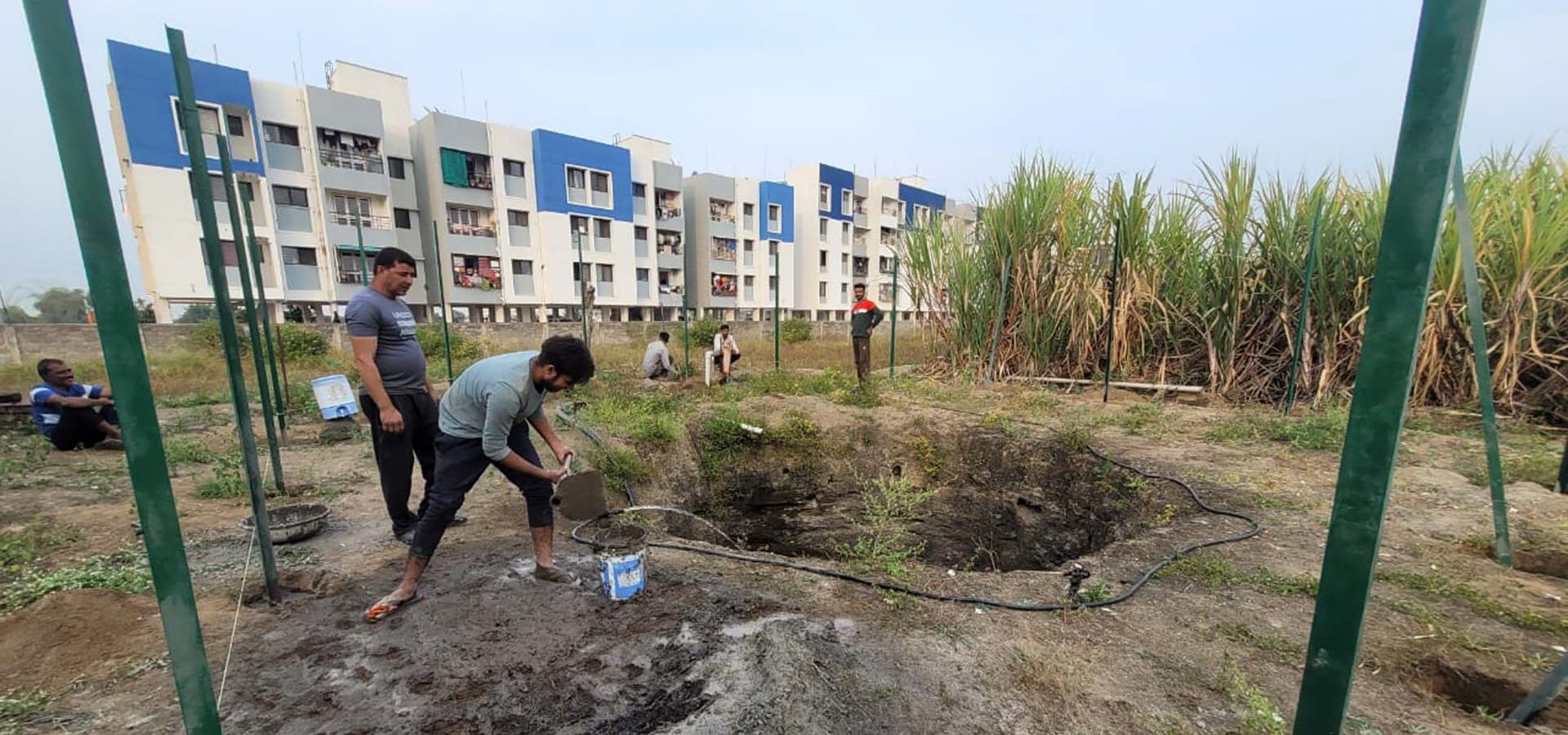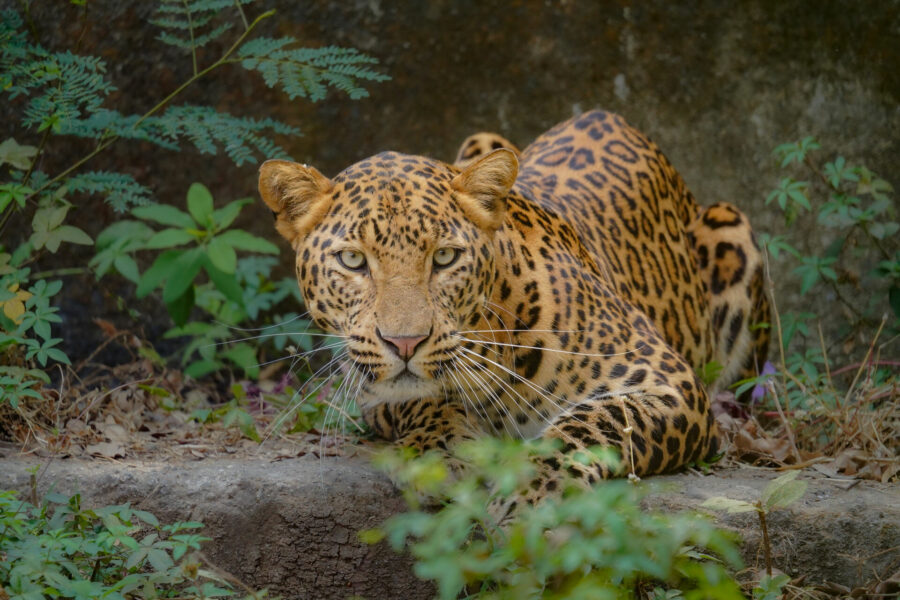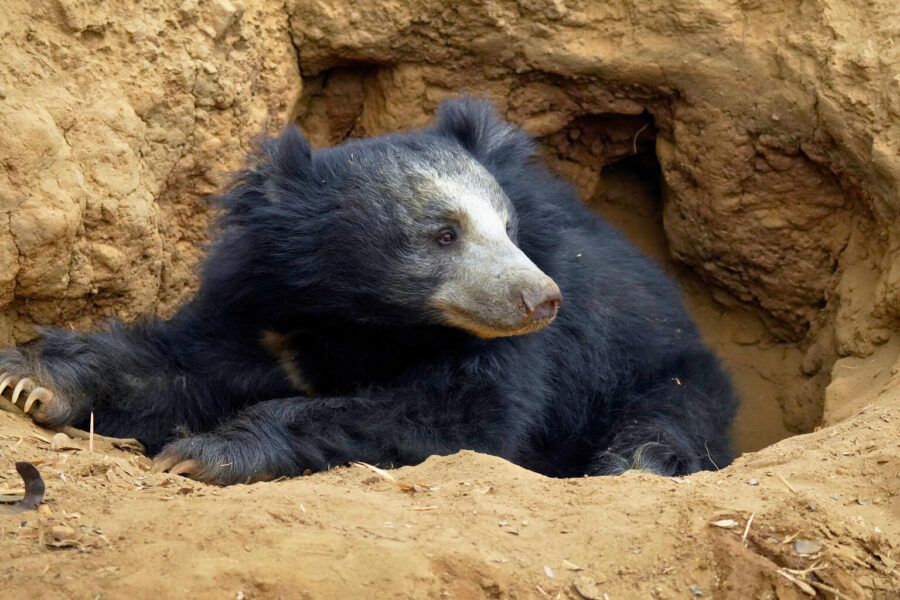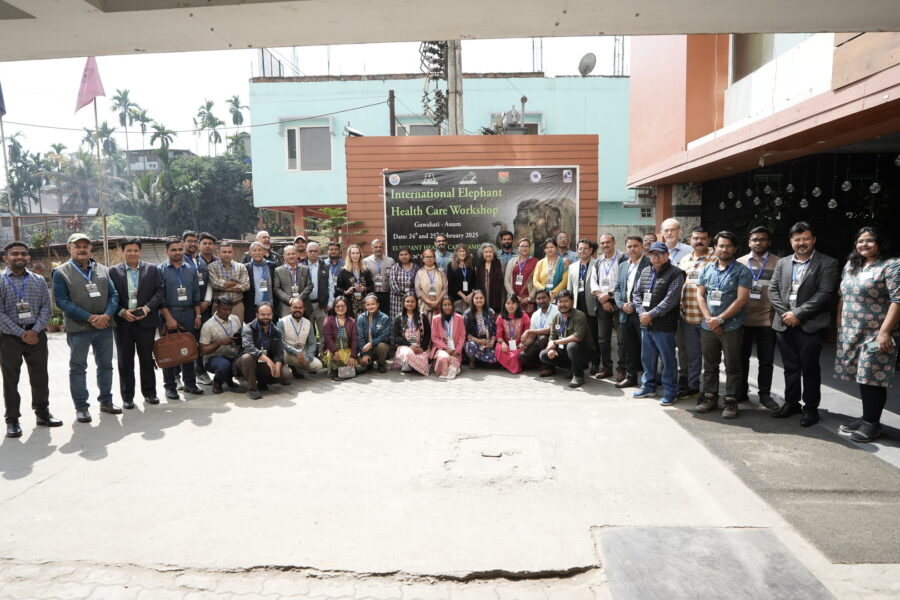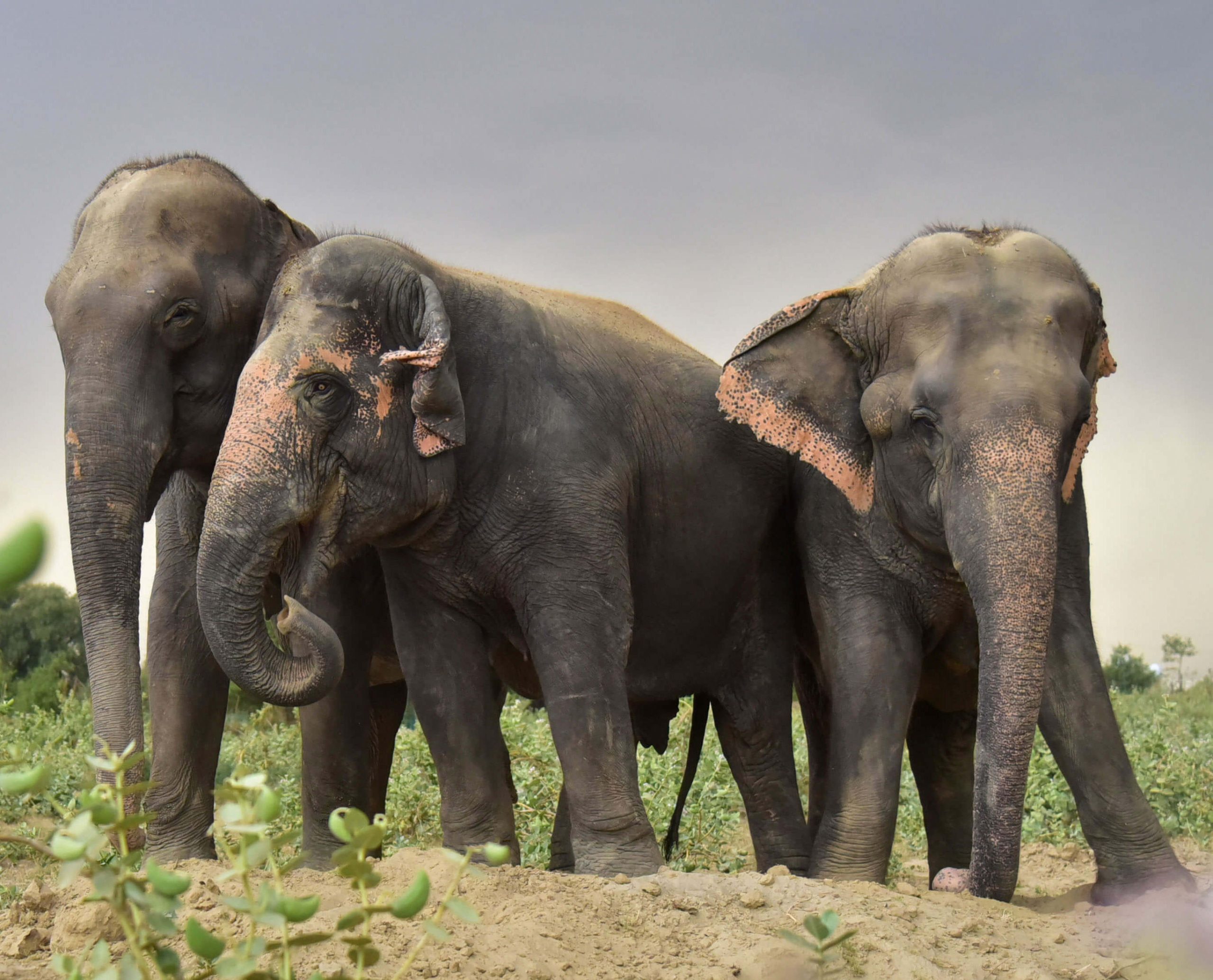Your donations at work – We’ve been able to cover two more open wells!
Open wells have been death traps for centuries. Our teams are frequently called to emergency rescues of wildlife that have fallen into deep wells. Sometimes we are successful, and other times we can’t arrive in time and the animal perishes.
Many of our supporters have discovered Wildlife SOS from seeing video footage or a lifesaving rescue of leopards, snakes, bears and other species. Although we are proud of our team for their ability to save many of these victims, our priority is to prevent the incidents from happening in the first place. Our efforts include educating the members of communities about what they can do to prevent the situations that lead to these ‘accidents’, and to cover the wells that have a history of being death traps.
In the last couple of weeks we’ve been working on covering two more of these known hazards that have taken the lives of leopards in the Western Ghats.
In the photos you can see why they might be a problem. The wells are often in accessible common areas, and there is no way to escape once an animal has plummeted to the bottom. Some wells have a solid lip and can be covered completely, and others must be surrounded by a fence.
India has countless open wells throughout the country that have helped communities survive drought and monsoon. Our goal is not to cover all of them, but to cover known hazards and highlight the problem to educate others. Our open well campaign aims to prevent wildlife from succumbing to an agonising end by working with communities to find solutions. Your support helps us succeed!
In 2025, we will continue to expand our work to help wildlife in many areas. One of them is by reducing the number of deaths that come from open wells.
See some of the challenges:
- Near residential housing, so it’s a hazard for humans, too.
- In a sugarcane field where wildlife live and hide.
- This well has a precarious lip that makes it easy to fall into.
- As shrubs and vegetation grow, they mask the danger.
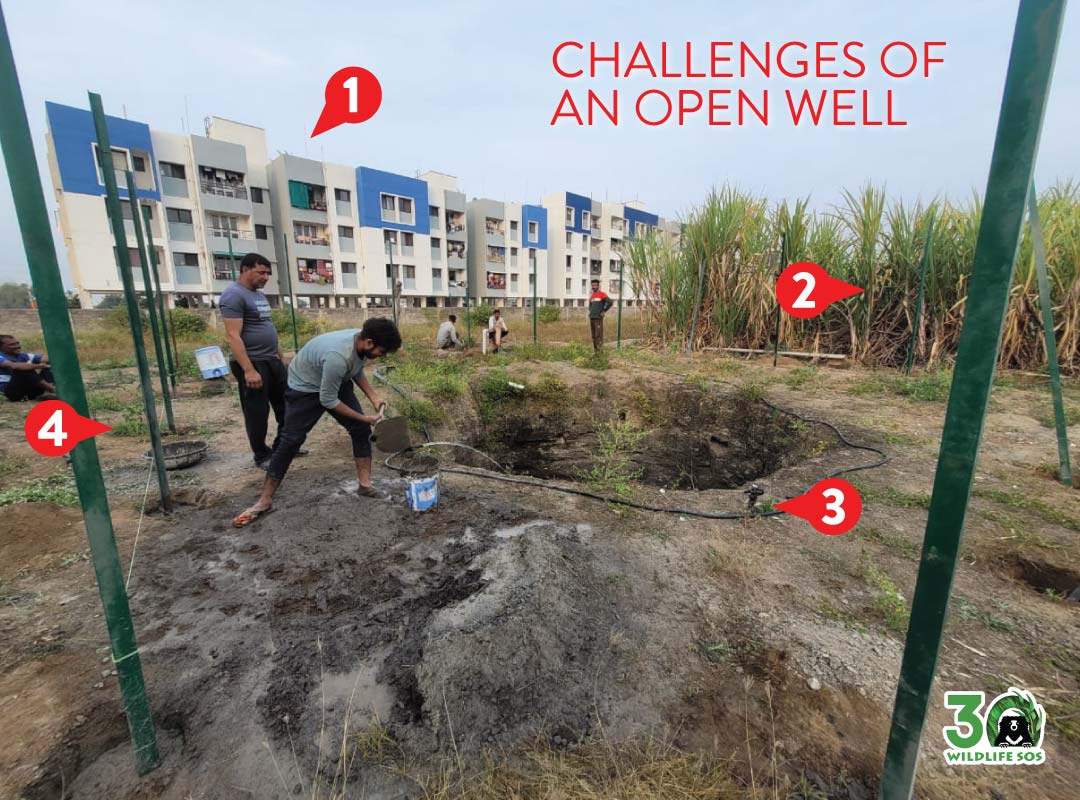
Click to Watch Leopard Rescues on YouTube
